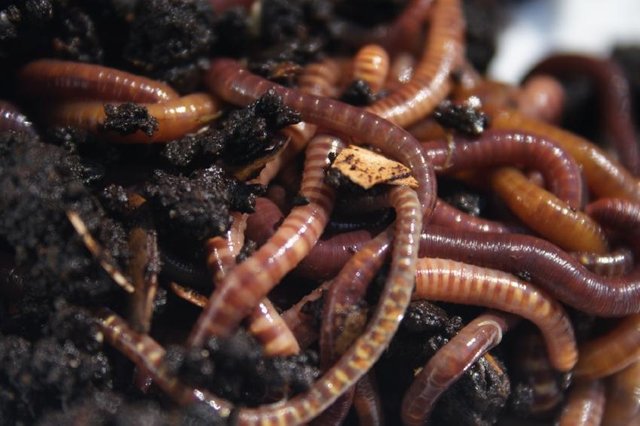What Composting Worms Want: How to Care for Red Wiggler Worms
Red wiggler worms are quite well adapted to living in bins and composting kitchen waste. So what do composting worms really need? Read on to find out.
Red wiggler worms in the wild inhabit the upper detritus layer of the soil. They are not burrowing worms like most garden worms or Canadian night crawlers. Here are the key elements needed for composting worms kept in a bin.
Composting Worms Need Darkness
It is important that worm bins be kept in complete darkness. Worms do not like light and will move very quickly to escape it. If light enters the worm bin, worms will do anything to escape. This doesn't mean that the lid can't be lifted. It just means that light in the bin on a regular basis will severely disturb worms.
Composting Worms Need Moisture
Composting worms are soft bodied creatures that absorb water through their skin. They need high levels of moisture, but not pools of water, in the bin to function. As well, the composting process which is taking place in the bin needs moisture to continue at optimal levels.
Adding kitchen scraps to a closed bin will usually provide enough water for the bin to harbor optimal conditions. At the start of a new worm composting bin, you may need to spray some water on the materials to create optimal moisture.
Optimal moisture for a bin is moist and wet like a wrung out sponge, but not dripping. If water is pooling at the bottom of the bin, add more bedding.
Composting Worms Need Bedding
Bedding for composting worms is usually some type of shredded paper or cardboard. Corrugated cardboard and egg cartons make excellent worm bedding. Shred by hand into 2 inch by 2 inch pieces. Newspaper processed with a paper shredder works very well also.
In the composting bin, bedding helps absorb excess moisture. As well, the bedding provides the carbon component of the composting process. Having plenty of carbon, or bedding, in the bin will help ensure that the bin doesn't become anaerobic.
Composting Worms Need Food
Technically, composting worms do not eat the food placed in the bin. They eat the bacteria and fungi which break down the food placed in the bin. Follow the same guidelines for worm composting as traditional composting: any vegetative matter, no meat, grease, or bones.
Beyond the above guideline, the smaller the food waste is chopped, the better. As well, very hard stalks such as broccoli, will take quite a while to decompose, as will certain peels. Be aware of this.
Composting Worms Need Warmth
Red wiggler worms will tolerate temperatures between just above freezing and 85 degrees Fahrenheit. Of course, if the worms are experiencing temperatures of a constant 45 degrees, there will not be much activity in the bin. Warmth helps both the worm activity and the composting activity in the bin.
Be cautious of direct sunlight. It may heat up the bin more than expected and possibly kill worms. Outdoor worm bins can be insulated with styrofoam, fiberglass insulation, straw bales or the like to protect from excessive heat or cold.
Making sure the above 5 components are present in the worm bin will ensure success.

Congratulations! This post has been upvoted from the communal account, @minnowsupport, by pullen from the Minnow Support Project. It's a witness project run by aggroed, ausbitbank, teamsteem, theprophet0, and someguy123. The goal is to help Steemit grow by supporting Minnows and creating a social network. Please find us in the Peace, Abundance, and Liberty Network (PALnet) Discord Channel. It's a completely public and open space to all members of the Steemit community who voluntarily choose to be there.
If you like what we're doing please upvote this comment so we can continue to build the community account that's supporting all members.